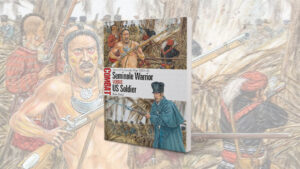Recipe for (temporary) Federal-Confederate Reconciliation: 500 chickens, 30 hams and countless pies, all served alfresco at Camp Letterman.
The Battle of Gettysburg had been over for two months, but more than 1,600 badly wounded Union and Confederate soldiers remained bivouacked nearby in a sprawling hospital village of neatly arranged tents called Camp Letterman.The symmetrical facility was set up a mile outside of Gettysburg along the single railroad track that went southeast to Hanover. It was far more comfortable than the scores of makeshift hospitals set up in barns, churches, warehouses and private homes—anywhere there was space to house the 21,000 wounded who had been left behind when the fighting ended on July 3, 1863.
But the canvas walls of the tents lining Letterman’s lanes could not muffle the groans of those suffering inside.Nor could the staff ever get used to the daily procession of bodies carried on litters to the cemetery that was shared by both Federal and Confederate dead. The stress wore not only on the wounded but also on those caring for them.That included Army surgeons and private physicians,nurses,attendants and dozens of civilian volunteers associated with the U.S. Sanitary Commission and its rival, the U.S.Christian Commission,who had been on the field since the battle.With spirits so low,the staff tried to find some way to cheer up everyone in the encampment, if only briefly.
A week earlier their efforts to organize a camp picnic had ended in disaster.All was going well until the food was brought out,and “the rebel convalescents rushed in upon the tables, driving our men away, and a scene of confusion ensued,” wrote a New York teacher, Sophronia Bucklin,who was serving as a volunteer nurse.By the accounts of Private Justus Silliman,a wounded member of the 17th Connecticut who witnessed the skirmish, it was an uglier scene than that.The food fighters not only were injured Confederate soldiers but also the able-bodied hospital attendants left at Gettysburg to take care of them “When the invitation was given for the wounded to partake of the good things,” he wrote home, “many of the rebel nurses wedged their way to the table and crowded our wounded out” before they “with their characteristic chivalry…gorged themselves with dainties.”
Despite the disappointing outcome of that occasion,the 31-year-old Vermont physician in charge of the hospital, Dr. Henry James, knew the value of such an event—if it could be controlled.When the suggestion was made to give a picnic another try,he quickly gave his approval. But this time he would make sure everyone behaved.
The congregations of three Philadelphia churches contributed $1,100 to a special collection for the banquet,which was scheduled for September 23. Mrs.Anna Holstein of Upper Merion,Pa.,a volunteer nurse,recounted that to create a more festive atmosphere,the avenues of Camp Letterman were “arched with evergreens and the tents hung with wreaths…producing a fine effect.”
Other hospital personnel,working with Gettysburg townspeople,began accumulating a ton of provisions rarely seen on the hospital menus. More than 500 chickens and 30 hams were rounded up, along with the promise of bushels of oysters, countless pies and tubs of ice cream to be delivered in time for the event.Five wagonloads of fruits and other delicacies were collected by the ladies of the U.S.Christian Commission from friends in eastern Pennsylvania to add to what Mrs.Holstein called the “grand feast of good things” being prepared.A band would be coming over from York, Pa., and rehearsals were going on for a minstrel show some soldiers were planning as part of the after-dinner entertainment.
Lieutenant Sanford Branch of the 8th Georgia wrote home on the eve of the event that “tomorrow will be a grand gala day here.There is to be a grand picnic.Preparations have been going on for a week or more.” But the young wounded officer had his doubts about the festivities. He questioned whether it was right to stage such an affair at the hospital,observing:“Strange idea is it not to have a picnic among the dying and dead.”
Unlike the gray skies that overshadowed the ill-fated first picnic a week before, September 23 dawned “bright and balmy,”re- called Mrs. Holstein, enough to “tempt many who had not yet ventured outside their tents into the open air,hoping they might be able to participate in the promised enjoyment.”
But because of the earlier experience,the Southern guests—both wounded and fit—were kept back under guard and had to watch, mouths watering, while the Union soldiers were served first, and, according to Sophronia Bucklin,“bountifully loaded trays were carried into the wards” for those unable to reach the tables. As “hundreds moved upon crutches with feeble, tottering steps to the table,”Anna Holstein was pleased to see how the soldiers looked “with unmistakable delight upon the display of luxuries.”
After all had finally filled themselves with fine fare than most had ever seen the bandaged picnickers sprawled about the grounds to guffaw together over the awkwardness of the contestants in the greased-pole climbing and other competitions that had been arranged, pitting Union and Confederate soldiers against each other in a way far less lethal than their encounters on Little Round Top and Cemetery Ridge a few months before.
Gerard A. Patterson is the author of Debris of Battle—the Wounded of Gettysburg, published by Stackpole Books.
Originally published in the January 2008 issue of America’s Civil War. To subscribe, click here.




